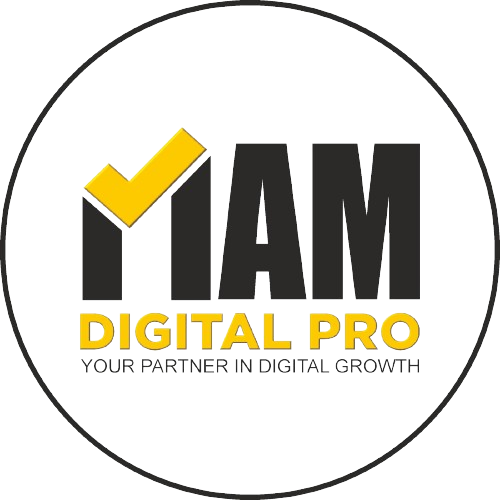In today’s digital age, social media has revolutionized how businesses connect with their audience. Social media marketing has emerged as a powerful tool for businesses, offering many benefits and opportunities. This article aims to demystify social media marketing, explore its advantages, and highlight how small businesses can leverage this strategy to thrive in the competitive landscape.
Understanding Social Media Marketing:
Social Media marketing refers to using social media platforms to promote products, services, or brands and engage with the target audience. It involves creating and sharing relevant and compelling content, interacting with followers, and building a robust online presence to drive brand awareness, customer loyalty, and business growth.
Benefits of Social Media Marketing
- Enhanced brand visibility: Social media platforms give small businesses unique opportunities to amplify their brand reach and increase visibility among a broader audience. By consistently sharing valuable and engaging content, companies can grow brand recognition and establish themselves as industry leaders.
- Targeted audience engagement: Social media lets businesses connect with their target audience personally, fostering meaningful relationships and building customer loyalty. Through active engagement, such as responding to comments, messages, and reviews, businesses can create a sense of community and trust, ultimately driving customer retention and advocacy.
- Cost-effective advertising: Social media marketing offers cost-effective solutions compared to traditional advertising channels. With precise targeting options, businesses can reach a larger audience with smaller budgets. Platforms like Facebook Ads and Instagram Ads provide detailed targeting capabilities, ensuring ads are shown to the most relevant audience, thereby maximizing return on investment.
- Increased website traffic and lead generation: Social media platforms are powerful channels to drive traffic to a business website, leading to potential conversions and sales. By strategically placing links to their website in social media posts, small businesses can guide interested users to their products or services, generating valuable leads and boosting revenue.
- Data-driven insights: Social media analytics provide valuable insights into customer behavior, preferences, and demographics. Small businesses can better understand their audience and optimize their marketing strategies by analyzing metrics such as engagement rates, reach, and audience demographics. These insights enable companies to deliver targeted and personalized content, improving overall campaign effectiveness.
Leveraging Social Media Marketing for Small Businesses
- Define goals and target audience: Small businesses should clearly define their marketing objectives and identify their target audience. Understanding the target audience’s needs, interests, and pain points enables businesses to create content that resonates and connects with potential customers.
- Choose the right platforms: Some social media platforms suit some businesses. Small businesses should research and select platforms that align with their target audience demographics and industry. For example, visual-based companies might succeed on platforms like Instagram or Pinterest, while B2B businesses focus more on LinkedIn or Twitter.
- Create compelling and diverse content: Engaging and relevant content is crucial to captivate the audience. Small businesses should create a variety of content formats, including images, videos, infographics, blog articles, and live streams, to showcase their expertise, tell compelling stories, and attract followers. Content should be tailored to each platform, considering the target audience’s format, tone, and preferences.
- Consistent branding: Establishing a consistent brand image across social media platforms helps build trust and recognition. Small businesses should maintain a cohesive visual identity by using consistent messaging, incorporating their logo and brand colors, and utilizing brand voice consistently. Consistency strengthens brand recall and makes it easier for customers to identify and connect with the business across different platforms.
- Engage authentically with the audience: Actively engage with followers by promptly responding to comments, messages, and mentions. Encouraging conversations, asking questions, and seeking feedback help build relationships and provide valuable insights into customer needs and preferences. Small businesses can foster community and loyalty by showing genuine interest and providing timely and helpful responses.
- Leverage influencers and partnerships: Collaborating with influencers or complementary businesses can significantly expand a small business’s reach and exposure. Partnering with relevant influencers or conducting joint marketing campaigns can create buzz, attract new customers, and enhance credibility. It’s important to select influencers whose values align with the business and have an engaged audience that matches the target market.
- Paid advertising campaigns: While organic reach is essential, small businesses can also explore paid advertising options on social media platforms to amplify their reach. Targeted ads can help companies reach a specific audience segment and generate leads effectively. Businesses can experiment with different ad formats, such as carousel ads, video ads, or sponsored posts, to find what resonates best with their audience.
- Monitor and analyze results: Regularly track and analyze social media metrics to evaluate the effectiveness of marketing efforts. Metrics such as engagement rates, click-through rates, conversions, and audience demographics provide valuable insights for optimizing future strategies. Tools like Facebook Ads Manager, Google Analytics, and social media platform analytics dashboards help businesses understand what’s working and make data-driven decisions.
Conclusion
Social media marketing has become an indispensable tool for small businesses, offering numerous benefits for brand visibility, audience engagement, and growth. By understanding the power of social media platforms and implementing effective strategies, small businesses can leverage these platforms to build strong, lasting relationships with their target audience. With careful planning, consistent content creation, strategic engagement, and data analysis, small businesses can thrive in the digital landscape and compete with larger counterparts. Embracing social media marketing is not just an option but a necessity in today’s highly connected world.
FAQs
1. What are the benefits of social media marketing for my small business?
Social media marketing provides several advantages for small businesses, such as increased brand awareness, improved customer engagement, lead generation, targeted advertising, and higher conversions. It allows you to showcase your products/services, connect with customers, drive website traffic, and promote your brand without a huge marketing budget.
2. How can I use social media to attract new customers?
You can use social platforms like Facebook, Instagram, Twitter, LinkedIn, etc. to connect with potential customers. Share visual content like photos/videos of products, behind-the-scenes, and employee spotlights. Engage followers by responding to comments/queries. Run contests and giveaways to increase engagement. Use hashtags to tag customers to increase visibility. Market to local audiences.
3. What type of content should I share on social media?
Share a mix of content – promotional posts about products/services, industry news, behind-the-scenes videos, user-generated content, employee spotlights, inspirational quotes, polls, contests etc. Share content that provides value to your audience and aligns with your brand image. Post consistently and monitor analytics to see what resonates best.
4. How often should I post on social media?
Posting 1-2 times per day on each platform is ideal. Schedule posts in advance using social media management tools. Analyze competitor and industry standards and how often your audience engages. Increase or decrease frequency based on your resources and audience response. Maintaining a consistent schedule is critical.
5. How can I measure the impact of my social media marketing?
Key metrics to track are – follower growth, engagement rate, clicks, impressions, reach, website traffic from social media, and conversions attributed to social ads/posts. Use built-in analytics on each platform and third-party social media analytics tools like SproutSocial, Hootsuite, etc., to track performance. Monitor frequently and optimize based on insights.
6. What is the best way to engage my followers on social media?
Respond to comments/queries in a timely manner. Ask questions to spark two-way conversations—reward engagement with discounts or giveaways. Share user-generated content like customer photos. Tag followers to get their attention. Message followers directly if needed. Send personalized responses instead of generic messages. Monitor conversations about your brand.
7. How do I convert social media followers into paying customers?
Offer promotions/discounts for following or sharing your page. Run contests and giveaways to collect emails and grow your email list. Include strong calls to action in posts to drive visits to your website/online store. Share links to landing pages and product pages. Use lead generation/contact forms. Retarget engaged visitors through ads. Craft campaigns targeting your followers.
8. Should I use paid advertising on social media?
Yes, paid social ads help expand your reach beyond your current followers. You can target specific demographics, locations, interests, etc. Start small with a daily budget and track conversion metrics. Facebook/Instagram ads give the most bang for your buck. LinkedIn, Twitter, and Pinterest ads are options, too. Work with a marketing specialist to optimize campaigns.
9. How can I measure the ROI of social media marketing?
Set specific goals and KPIs. Use UTM parameters and pixels to track traffic/conversions from each social platform to your website. Integrate analytics platforms to match user actions to channels. Divide sales/conversions generated from social by your advertising spend to calculate ROAS. Review monthly for positive ROI – a 3:1 return is a good goal. Refine strategies over time.
10. How much time should I spend on social media marketing?
Expect to spend a few hours per day managing your social presence – creating content, posting, interacting with followers, monitoring conversations/mentions, and running ads. Plan for 30-60 mins per platform daily. Use social media management tools to schedule some posts in advance. Outsource if needed. Be consistent – reward comes with continued investment of time.


Excellent
Dear MAM,
Thank you for sharing such an informative article on the power of social media marketing for small businesses. I found your insights to be valuable and inspiring.
I would be grateful if you could share some examples or success stories of how social media marketing has specifically benefited small businesses in your experience. Your expertise would be greatly appreciated!
Additionally, I would love to invite other readers to join the conversation and share their own experiences or success stories by which they enabled small businesses to success using social media. Thank you in advance for your time and insights
Sure
Great read! Good solid information!
Thanks Matthew
Very insightful tips and information, thank you.
Glad to know that
Very Informative
Thanks